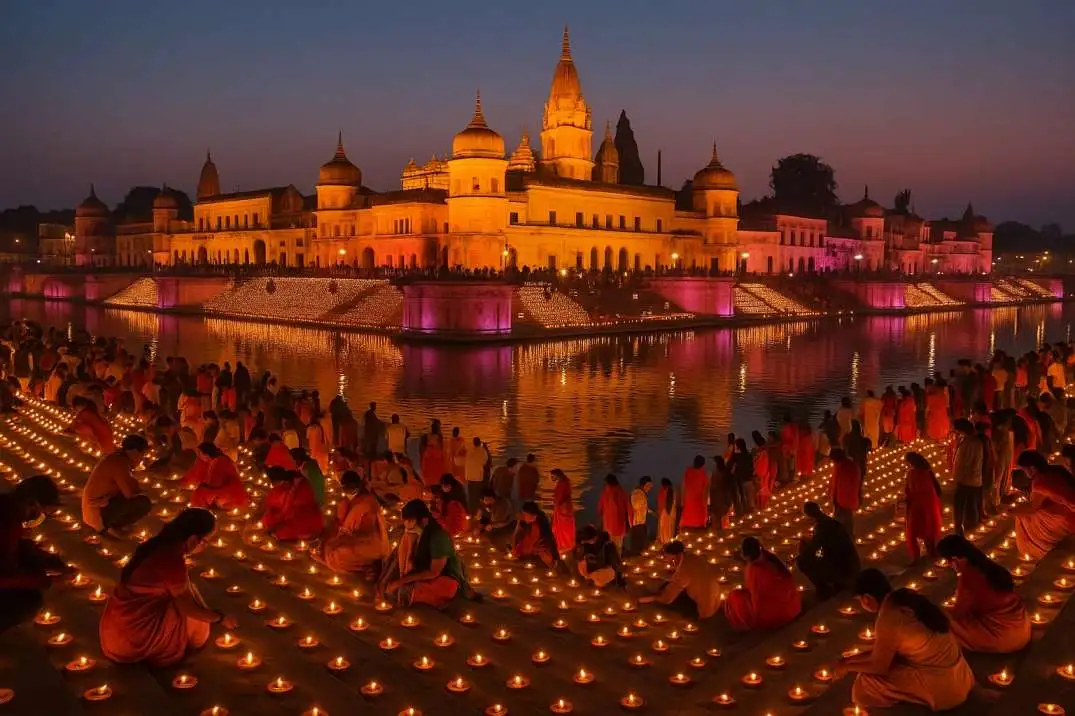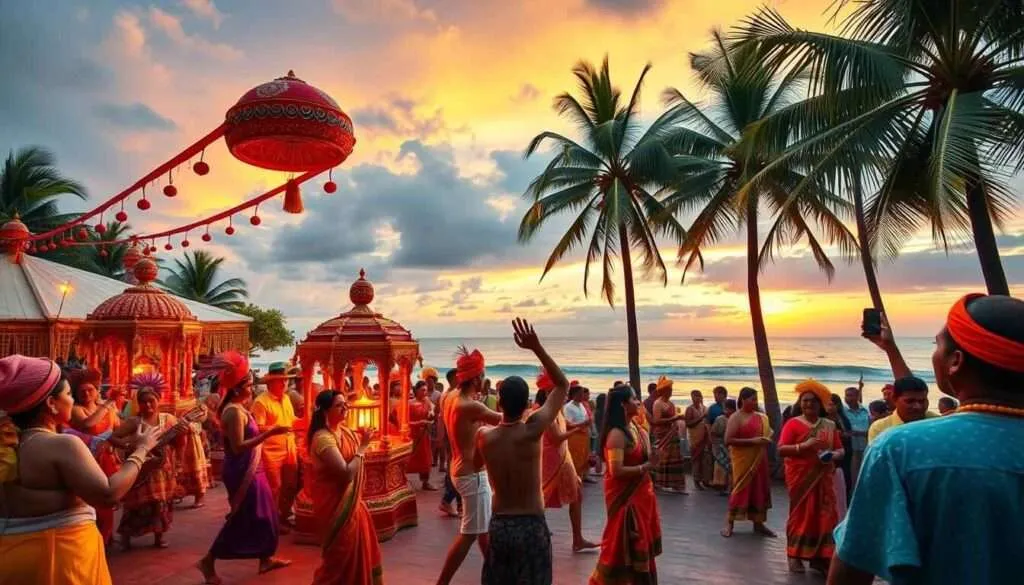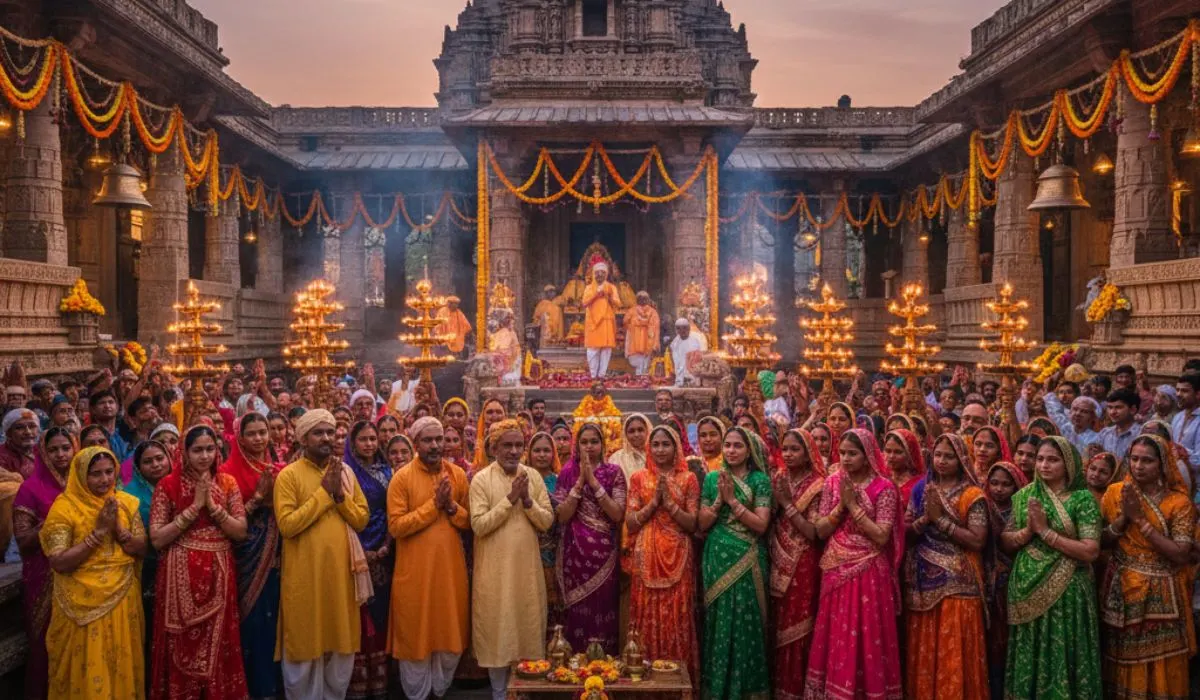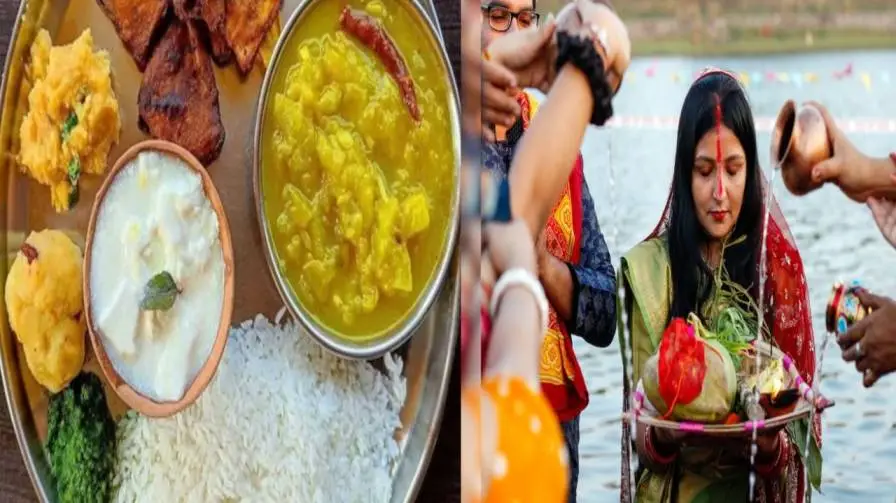People celebrate Diwali with great fervor across India. But in Ayodhya, they give special importance to the festival. This city has a strong connection to the homecoming of Lord Rama. This article explores the role of Ayodhya in Diwali. Recent trends and changes are also highlighted.
Historical and Mythological Roots
Many people believe that Ayodhya is the birthplace of Lord Rama.
- The story of Rama’s exile and return is central to Diwali. After 14 years of exile, the people of Ayodhya welcomed Rama back.
- People in Ayodhya reportedly lit rows of lamps to celebrate his arrival.
- Since ancient times, people have tied lighting diyas and festive illumination to Ayodhya.
That legend has shaped the modern Diwali customs. Without Ayodhya, the tale of light conquering darkness would lose its key location.
Ayodhya During Diwali: Deepotsav
In Ayodhya, Diwali festivities are often called Deepotsav.
- Deepotsav includes rituals, cultural shows, and a massive lighting of lamps.
- People adorn the ghats on the Saryu River with diyas.
- Ram Ki Paidi is a focal point for the lamp-lighting events.
- Each year, Ayodhya aims to break records for the number of lamps lit.
- In Diwali 2024, around 2,512,585 diyas were lit across many ghats.
- Over 1,100 participants held an aarti at the same time.
Such record attempts give Ayodhya a spotlight during the festival.
Recent Trends & Features: New Ram Temple and Diwali
In January 2024, they consecrated the Ram Janmabhoomi Temple in Ayodhya.
The first Diwali after the temple’s consecration has extra significance.
This gives a renewed attraction for pilgrims and devotees. We expect more lighting, more participation, and more media attention.
Bigger Celebrations, More Infrastructure.
Ayodhya is being prepared with upgraded infrastructure for Deepotsav.
- Spectator galleries are being constructed at Ram Ki Paidi to host thousands.
- The city is receiving complete illumination in preparation for the festival.
- Volunteers are being mobilized in large numbers for lamp lighting.
- A new wax museum is being planned for Deepotsav 2025 near the temple.
- Authorities have announced special flights to connect major cities to Ayodhya during Diwali.
All these trends point to Ayodhya’s growing stature as a global Diwali hub.
Spiritual & Symbolic Importance
Ayodhya is not a site; it is a symbol.
- Celebrating Diwali boosts faith and devotion. People think it celebrates Rama’s return.
- Ayodhya’s setting highlights the symbol of light over darkness and truth over ignorance.
- The geographic link lends authenticity to the festival’s narrative.
People believe that visiting Ayodhya during Diwali brings extra spiritual merit. Rituals are intensified there. Many more prayers, recitations, and performances are arranged.
The atmosphere is immersive. Lamps, chants, river reflections, and temple bells combine to elevate devotion.
Impact on Tourism, Economy & Culture
- Ayodhya’s Diwali draw has economic effects.
- Pilgrimage tourism surges during Diwali.
- Hotels, local markets, food vendors, transport, and crafts—all benefit financially.
- The city’s visibility increases in the media and social platforms.
Cultural heritage is also showcased. Folk dances, music, Ram Leela plays, storytelling, and exhibitions are woven into Deepotsav. Tradition is preserved and shared.
Recently, breaking lamp lighting records has caught a lot of attention, both in the U.S. and around the world.
Because of that, Ayodhya is being positioned as a cultural capital, not only of faith but of spectacle.
How Diwali in Ayodhya Has Changed Over Time?
In earlier decades, Diwali celebrations in Ayodhya were local and less publicized.
- With time, the scale has grown. Authorities now focus more on public lighting, mass participation, and record attempts.
- The new Ram Temple has added a modern phase. The festival is now framed in a larger narrative.
- Infrastructure development—roads, lighting systems, security, seating—has improved.
- Thus, Diwali in Ayodhya has shifted from a local ritual to a national and global event.
Things to See & Experience in Ayodhya During Diwali
If one visits Ayodhya during Diwali, certain experiences should not be missed:
- Ram Mandir & Janmabhoomi — the temple is the spiritual core of the celebration.
- Ram Ki Paidi & Saryu Ghats — millions of diyas are lit along the riverbanks.
- Aarti ceremonies — the synchronized worship are very powerful.
- Ram Leela performances — scenes from the epic are enacted in open ground.
- Cultural shows & exhibitions — folk dancers, drama, music, and displays.
- Wax museum & new attractions — new installations add modern appeal.
- The timing matters. Arrive a day or two before to see the full buildup.
Fast bookings for travel and lodging must be made, as the demand is very high.
Conclusion
The significance of Ayodhya in Diwali celebrations is profound. Mythical roots, current Deepotsav events, and Ayodhya’s growth as a pilgrimage site all back this idea.
In Ayodhya, Diwali is more than a festival. It's a vibrant story, a show of light, and a celebration of faith. Ayodhya’s Diwali will shine even brighter in the coming years. The new Ram Mandir is ready, and exciting lighting events are in the works. May the lamps of knowledge and devotion in Ayodhya inspire all those who celebrate.













